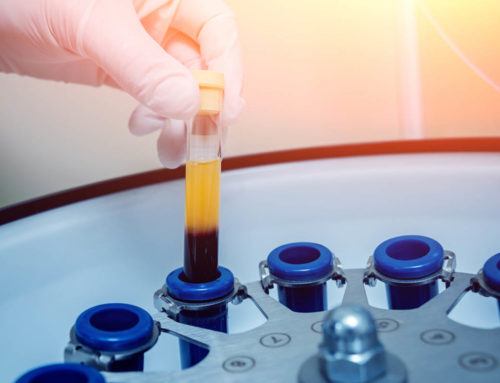When it comes to breast augmentation or reconstruction, one of the key decisions women face is choosing the right type of breast implant. With advancements in medical technology, there are currently two main types available: saline-filled and silicone gel-filled implants.
![]()
Each type offers unique characteristics and considerations that individuals should be aware of before making an informed decision. In this comprehensive guide, we delve into the details of these two types of breast implants, providing valuable insights into their composition, benefits, potential risks, and factors to consider when selecting the most suitable option for your desired outcome.
Whether you’re seeking enhancement or reconstruction, understanding the differences between saline-filled and silicone gel-filled implants is crucial for making an informed and confident choice.
Saline-Filled Breast Implants
Saline-filled breast implants consist of a silicone outer shell that encloses a sterile saltwater (saline) solution. These implants are available in two variations: pre-filled options and those filled with saline during the implantation procedure. Designed with versatility in mind, saline-filled implants come in various sizes and feature either smooth or textured shells. The Food and Drug Administration (FDA) has granted approval for the use of saline-filled breast implants in breast augmentation procedures for women aged 18 and above, as well as for breast reconstruction in women of any age. Additionally, these implants are utilized in revision surgeries, which aim to correct or enhance the outcomes of previous procedures.
Silicone-Filled Breast Implants
Silicone gel-filled breast implants are characterized by a silicone outer shell that encloses a filling of silicone gel. These implants offer a range of options in terms of size and shell texture, catering to individual preferences.
Approved by the regulatory authorities, silicone gel-filled breast implants are permitted for breast augmentation procedures in women aged 22 and above. Furthermore, they are authorized for breast reconstruction in women of any age, making them a versatile choice. Additionally, these implants find utility in revision surgeries, where they play a crucial role in rectifying or enhancing the outcomes of prior surgical interventions.
![]()
Safety Information on Breast Implants: Important Considerations
Breast implants are not designed to last a lifetime. The longer a woman has implants, the higher the chances of requiring surgery to remove or replace them. Common complications and adverse outcomes among breast implant patients include capsular contracture, the need for reoperation, and implant removal (with or without replacement). Other frequently encountered issues involve implant rupture with deflation, wrinkling, asymmetry, scarring, pain, and infection. Additionally, women with breast implants may have a very low but slightly elevated risk of developing anaplastic large cell lymphoma (ALCL).
Magnetic resonance imaging (MRI) remains the most effective method for detecting silent rupture in both saline- and silicone gel-filled breast implants.
There is currently no apparent link between saline- and silicone gel-filled breast implants and connective tissue disease, breast cancer, or reproductive problems. Nevertheless, to fully rule out these and other complications, larger and longer studies would be required compared to those conducted thus far.
In June 2011, the FDA released an update regarding the safety of silicone gel-filled breast implants. This update included preliminary findings from the studies mandated by the manufacturers during the approval process, as well as a review of other available scientific data.
The Summary of Safety and Effectiveness for each FDA-approved saline- and silicone gel-filled breast implant provides safety information known at the time of FDA approval. As the FDA becomes aware of new safety information, it requires companies to update their product labeling accordingly. The most up-to-date safety information regarding saline- and silicone gel-filled breast implants can be found in the product labeling.
Breast Tissue Expanders
Breast reconstruction is a surgical procedure performed after mastectomy, to restore breasts that have been injured, congenitally deformed, or as part of gender reassignment surgery. As a crucial step in the reconstruction process, a breast tissue expander is often utilized to gradually stretch the patient’s tissue, allowing for the insertion of an implant or the patient’s own tissue. These tissue expanders resemble thick-walled silicone balloons, available in various sizes and shapes, with either a smooth or textured outer surface. They are implanted beneath the breast skin, tissue, or chest muscle and are regulated by the FDA as medical devices. In immediate reconstruction, the expander is inserted immediately after mastectomy, while in delayed reconstruction, it is implanted in a separate surgery months or years later.
Once the surgical incision has healed, the tissue expander is gradually “inflated” over a period of weeks to months. This inflation can be achieved through a series of saline solution injections administered at the healthcare provider’s office or via a patient-controlled device that releases carbon dioxide gas into the expander.
Since tissue expanders are temporary devices, they are not meant to remain in place for more than six months. Once the expansion is complete, a subsequent surgical procedure is performed to remove the expander and either insert a breast implant or utilize the patient’s own tissue.
The use of tissue expanders does carry some risks. It can potentially lead to breast tissue injury, thinning of the skin, and pain, particularly during the saline filling process. Infection is also a possibility, along with the potential rupture of the expander or infection at the site or port for saline injection.




